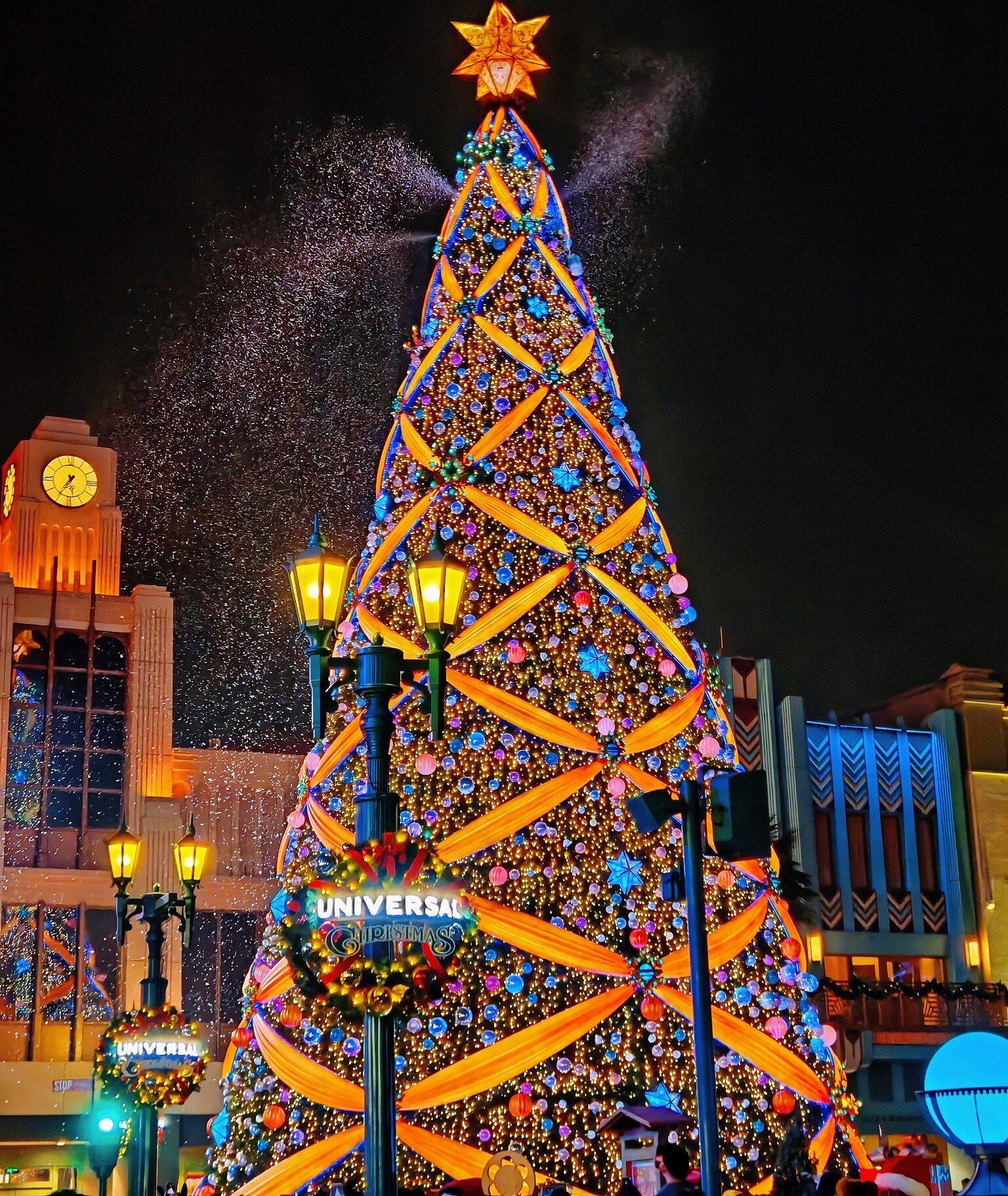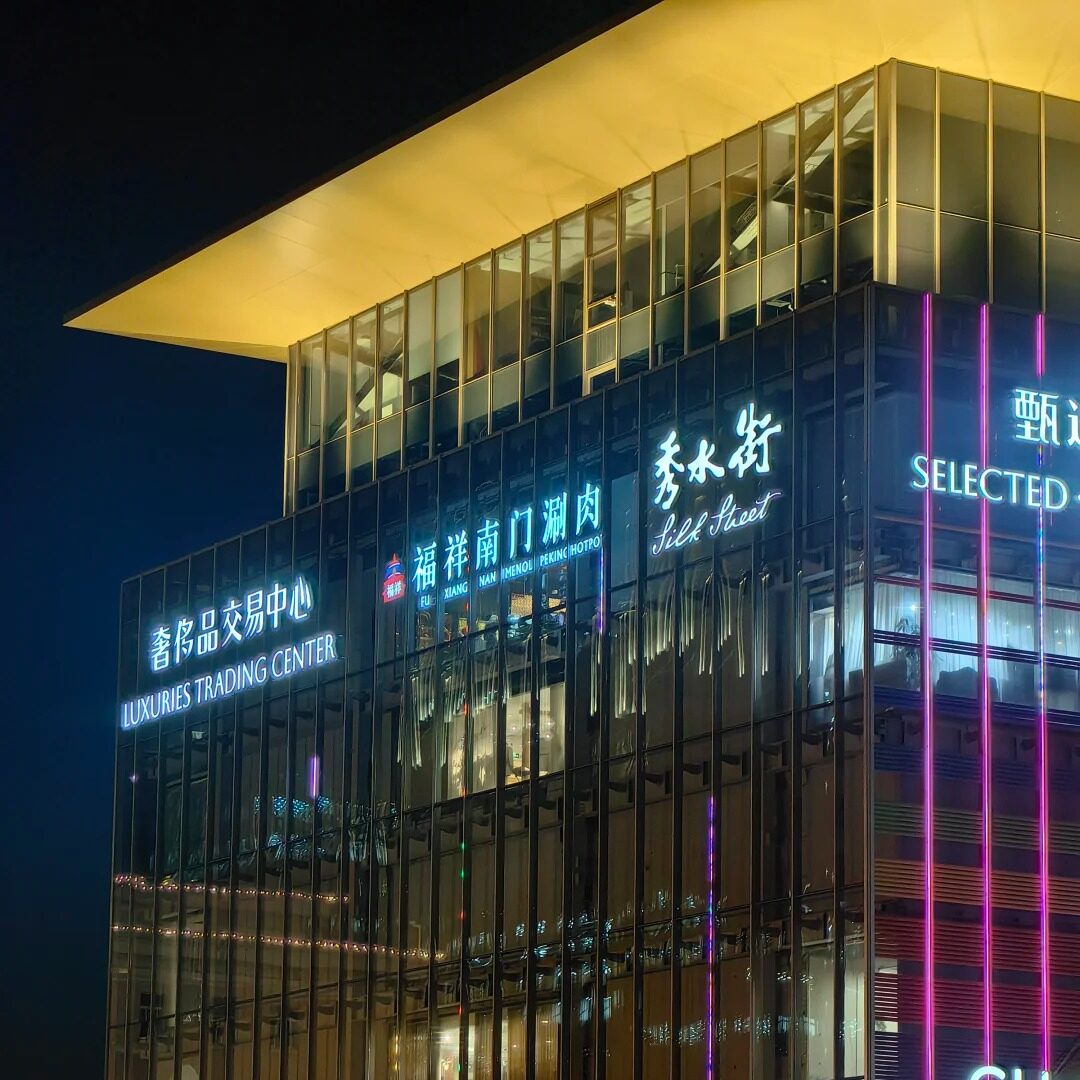As China's dynamic capital, Beijing blends ancient grandeur with modern verve. Imposing imperial relics coexist with dazzling skyscrapers, making it a city where you can time-travel between eras. Old Beijing charms with its labyrinthine hutongs and serene temples, while new Beijing beckons with trendsetting art districts and the legacy of the 2008 Olympics. No first-time visitor leaves unimpressed—Beijing travel excites all senses.Yet this multifarious metropolis can overwhelm. From negotiating hectic crowds to communicating without Mandarin, difficulties may arise. But armed with insights, any traveler can sidestep issues and craft an unforgettable Beijing journey. Within this guide lies wisdom: when to visit, unmissable landmarks, local secrets, and budget tips to experience Beijing's richness affordably.
Which Tourist Traps Should You Avoid When Visiting Beijing?
Beijing is full of wonders—but like any big city, it has its fair share of tourist traps. If it’s your first visit, here are a few things to watch out for:
1. Tea House Scams:If a friendly stranger invites you for a “cultural experience” or “English practice” that ends in a very expensive tea bill, it’s a classic scam. Politely decline and keep walking. Trust your gut—locals don’t usually pull tourists into tea shops.
2. Overpriced Souvenirs at Hotspots:Shopping near the Forbidden City or the Great Wall? Expect marked-up prices. If you’re after souvenirs, try Panjiayuan Market or the small shops in hutongs—more charm, less markup.
3. Fake Taxis:At airports or tourist spots, avoid unlicensed taxis. Always use official taxi stands or ride-hailing apps like Didi. And yes, always ask the driver to use the meter.
4. Temple Entrances That Aren’t the Real Deal:Some people will try to guide you to “secret” entrances of places like Lama Temple or the Summer Palace and then ask for tips or “donations.” Stick to marked gates with ticket booths.
5. Great Wall Tours That Skip the Wall:Sounds wild, but it happens. Some budget tours pack in jade factories and herbal medicine shops, with barely 30 minutes at the actual Wall. Always check what’s included and read real traveler reviews, not just star ratings.Beijing’s amazing, but a little street sense goes a long way. If something feels off or pushy, it probably is. Walk away, laugh it off, and get back to exploring.
What’s the Best Time to Visit Beijing?
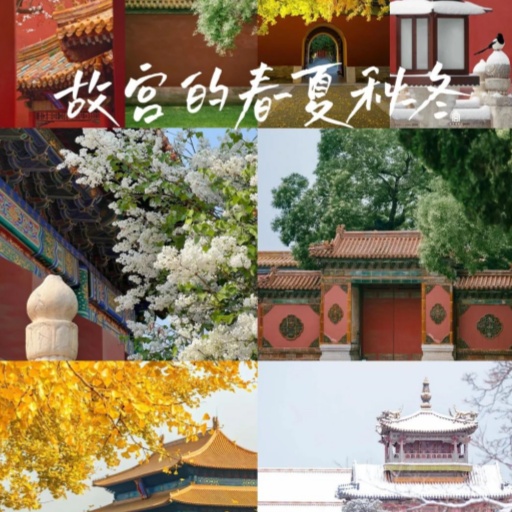
The Forbidden City Through the Seasons
Beijing Through the Seasons: Spring and Fall Are the Golden Times to Visit
Spring (March-May) and Fall (September-November) offer Beijing's mildest, driest weather. In Spring, temperatures rise from cool to warm, with bursts of florals like peonies, making iconic sights like the Summer Palace especially scenic. Autumns bring vivid foliage and crisp blue skies—ideal for outdoorsy pursuits like hiking the Great Wall. These shoulder seasons tend to be less crowded than summer, though domestic travel peaks during "Golden Weeks."
Summer (June-August) means sweltering heat and heavy humidity, with temperatures peaking around 95°F. It's prime thunderstorm season too. Yet it's also peak tourist season, with attractions teeming with crowds, especially around major holidays. The upside? Flowering gardens are lush, night markets pop up, and cultural events like Peking Opera abound.
Winters (December-February) are frigid but festive, with occasional snow dusting the Forbidden City and street vendors selling hot snacks. It's mercifully less crowded, but daily highs hover around freezing. Major tourist spots stay open, but opening hours may vary.
When to Avoid the Crowds and Still Catch the Best Views?
Public holidays like National Day (October 1st) and Chinese New Year (late January/February) bring peak domestic travel—attractions become human sardine cans. Likewise, avoid early May's Labor Day holiday and summer's hottest months (July-August) for smaller crowds."Secret season" moments offer fewer tourists and temperate weather: from late September to mid-October after National Day, or April before Labor Day. Mid-March's Qingming Festival and late September also draw fewer vacationers.
Your best Beijing travel window hits in early fall (mid-late September). It's comfortably cool, the sky is bright blue, and the crush is minimal. Locals enthusiastically recommend this fleeting sweet spot before winter's chill sets in.
What Are the Top Places to Visit in Beijing for First-Timers?

Mutianyu Great Wall
The Must-Sees: Great Wall, Forbidden City & More
You can't claim to have truly experienced Beijing without checking off certain iconic attractions. The ancient Great Wall snaking across rugged hills cements Beijing's historical grandeur. Trek the well-preserved Mutianyu stretch for classic watchtower views minus Badaling's tourist tides.No visit to Beijing is complete without standing atop the Great Wall and soaking in the centuries of history it holds. Spanning over 13,000 miles, this ancient barrier once guarded China’s northern frontier. While the Badaling section is the most famous, it’s often overcrowded and less authentic. Instead, opt for the Mutianyu section—only 1.5 hours from central Beijing. It's quieter, more scenic, and beautifully restored with watchtowers and crenellated parapets.You can hike along the wall itself or ride the cable car for a scenic lift to the top. There’s also a fun toboggan ride down—great for families and adventurers.
Next up? The Forbidden City's hushed majesty leaves visitors breathless. This colossal 15th-century imperial palace harbors exquisite pavilions, artefacts, and tales whispered through ornately carved stone. The Forbidden City is not just Beijing’s heart—it’s China’s soul. Built in 1420 during the Ming dynasty, it served as the political and ceremonial center for over 500 years. With over 900 buildings and sprawling courtyards, it's the world’s largest ancient palatial complex. Each golden roof and red wall tells a story of emperors, dynasties, and dramatic power shifts.Buy timed entry tickets in advance to skip lines.Start your visit at the Meridian Gate, and slowly make your way through halls with poetic names like the Hall of Supreme Harmony.
Experience living history at the Summer Palace, a regal 18th-century lakeside retreat adorned with intricate pavilions, temples, and imperial gardens. Rent a boat and rowabout Kunming Lake feeling like royalty!Behold Beijing's profound spirituality at the Temple of Heaven, an ornate Taoist masterpiece where Ming and Qing emperors performed rituals. Gaze awestruck while locals calmly meditate or practice tai chi beneath ancient cypresses.The Temple of Heaven isn’t just beautiful—it’s deeply symbolic. Built in 1420, this Taoist complex was where emperors prayed for good harvests and divine favor. Its main hall, the Hall of Prayer for Good Harvests, is a circular wooden marvel built without nails, perched atop three marble tiers. Its perfect geometry and vivid blue tiles represent heaven itself.
Unexpected Gems: From Jingshan Park to Local Tea Houses
Away from the prime sites, some of Beijing's most enriching experiences hide in plain sight. Don't skip the panoramic views of the Forbidden City framed by colorful flower beds from Jingshan Park. Stroll its winding paths amid locals dancing, practicing calligraphy, and savoring tea.Jingshan Park might not have the fame of the Forbidden City, but it offers one of the best panoramic views in Beijing. Located just north of the Forbidden City, this former imperial garden was once used by Ming and Qing emperors as a private retreat. Today, it’s a favorite spot for locals and savvy travelers. Climb the central hill—made from soil excavated during the construction of the Forbidden City—and you’ll be rewarded with sweeping views of Beijing’s ancient and modern skylines. On a clear day, you can see the golden rooftops of the Forbidden City, the modern skyscrapers of CBD, and even the distant mountains surrounding the capital.
Speaking of tea, if you come to China, you really should experience Chinese tea culture—but keep your eyes open. Skip the overpriced tourist traps and look for teahouses trusted by locals. A good one will have a tea master who guides you through the brewing process in a traditional gongfu tea ceremony. It’s not just about drinking—it’s a slow, quiet ritual that gives you a taste of Beijing’s more contemplative side. You’ll find these hidden spots in hutongs near places like Nanluoguxiang or the Lama Temple. If you’re not sure where to go, check Dianping or Meituan. Even if you can’t read Chinese, star ratings, photos, and menus make it easy to spot the real deal.
Meander too through the enchanting hutongs—labyrinthine courtyard alleys that were Beijing's historic lifeblood. Hunt for hidden courtyard cafes, indie boutiques, and cloistered family homes frozen in time. It's one of the last gasps of old Beijing amidst modern high-rises.Walking through Beijing’s hutongs is like stepping into a time capsule. These narrow alleys, often just wide enough for two bicycles to pass, weave through historic districts that once housed aristocrats, officials, and commoners alike. Some hutongs stretch over centuries, and wandering them offers a deep, tactile sense of Beijing’s soul. Look closely, and you'll spot old wooden doors, weathered brick walls, and faded couplets from Chinese New Year pasted beside thresholds.
How Do Locals Really Get Around—And Should I Try It Too?
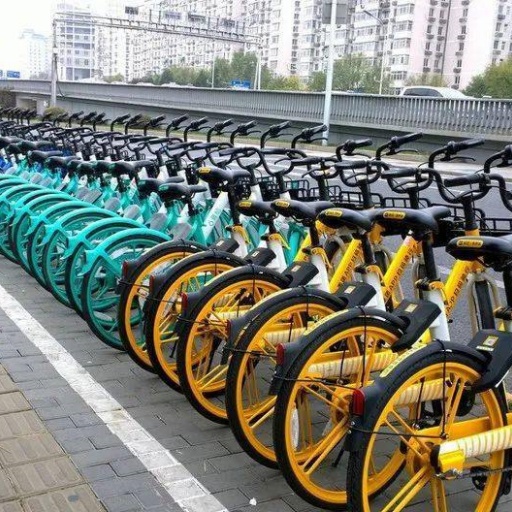
Shared bikes in Beijing
Navigating the City with Subways and Buses
Beijing's expansive subway system weaves across the city in an intricate web of 24 color-coded lines spanning over 400 miles. It's fast, affordable (¥3-9), and equipped with English signs. Just remember: download an offline transit map and avoid sardine-packed trains during rush hour.
For short hops, utilize Beijing's extensive bus network of over 900 routes—just buy your ticket with exact change after boarding. Better yet, get a Yikatong prepaid transit card to streamline passage between subways and buses seamlessly.
A heads up: bus drivers appreciate the courtesy of exiting through rear doors. And like anywhere, stay alert for pickpockets in packed buses and metro cars.
Using Taxis and Ride-Hailing Apps Smartly
Caught in a hurry or transit lull? Beijing's prolific taxis offer metered convenience plus quirks. Life-hackers advise having your destination's address written out to show drivers, who often lack English fluency. Flagfalls start around ¥13, then watch the meter carefully to guard against rigged fares—the rate should climb no faster than ¥2.5 per mile.
For foolproof point-to-point service, just whip out the Didi ride-hailing app instead. But first, get a SIM card or data package to avoid roaming fees. Select your desired ride type, your pickup and destination in English, and pay cashless using your synced credit card or WeChat Pay account.
Exploring by Bike for a More Intimate View
Whiz through Beijing's heart just like a local by hopping on a shared bike. Apps like Meituan and Hello Bike let you scan to unlock public cycles parked all over for about ¥1 per 30 minutes. It's cheap, eco-friendly, and grants a liberating mobility to discover hidden gems.
With a bike basket full of snacks, leisurely pedal the ancient hutongs to glimpse cloistered courtyards and residents playing mahjong. Spin along the shaded paths of centrally located parks like Jingshan Park. Or cruise scenic Shichahai Lake and Houhai Lake, pausing for street food or a drink alfresco in lakefront bars.
What Should I Eat While in Beijing?
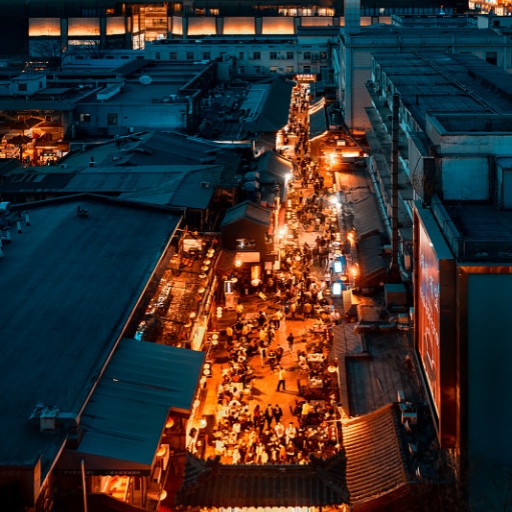
Wangfujing Night Market
Beyond the Roast Duck: Hidden Food Streets and Local Eats
While you'll no doubt queue up for crispy-skinned Peking duck eventually, Beijing's more humble eats deserve their moment too. For a smorgasbord of sizzling skewers, thick savory pancakes, and fresh dumplings galore, hit up the bustling Wangfujing Night Market. Wandering its smoke-swirled stalls feels like stepping into a tasty time warp.
Rather graze low-key instead? Detour to Guijie (aka Ghost Street), an aged alleyway lined with unassuming eateries locals swear by for authentic hearty fare like beef noodle soup, hot pots, and Northern Chinese barbecue. Tuck into a homey hole-in-the-wall while rubbing elbows with boisterous regulars. The lively din is all part of the experience.
For an offbeat culinary adventure, seek out Beijing's wet markets buzzing with bargain stalls proffering everything from silken tofu to pungent fermented vegetables. Watching tanned vendor grandmas sort seafood or hand-pull noodles offers fascinating cultural immersion.
How to Dine Like a Local (Without Speaking Mandarin)
Don't let the Chinese-only menus intimidate you from joining Beijing's foodie fray. These tips help you dine confidently like the locals do:First, study up on your Chinese menu reading skills by downloading a translation app like Pleco or Google Lens. Point your camera and let it work wonders decoding cryptic dishes.
Next, use visuals to your advantage. Scout eateries with window displays or picture-based menus, then just point at what piques your palate. Or better yet, meekly follow where locals flock to queue up—those are your surefire bet spots.
Finally, mind basic Chinese dining etiquette. Bring small cash bills, don't gesture chopsticks rudely, and be prepared to share and sample hot communal plates family-style rather than expect solo portions. Dig in with an open, adventurous spirit and you'll relish these authentic tastes.
Can I Enjoy Beijing on a Budget?

Beihai Park
Free Things to Do That Locals Love
You can experience Beijing's magic without always opening your wallet. The city overflows with lovely free diversions adored by locals, like scenic parks and festive markets. Spark your wander in Beihai Park, an ancient royal garden framing a serene lake where you can legally row little boats. Or stroll amid swaying willows in tranquil Jingshan Park before snaring prime Forbidden City views from its summit.
Time it for weekend mornings at the lively Panjiayuan Ghost Market, a legendary jumble sale where vendors hawk everything from antique chopsticks and Mao memorabilia to modern wares and curios. Haggling practice, people-watching, and treasure hunting are all part of the fun!
Then find free cultural enrichment at museums like The Shanxi Art Museum or Capital Museum, where exhibits showcase traditional crafts, calligraphy, and objets d'art. If admission does cost a fee, note that many offer free entry on certain days and times.
Budget Stays and Public Transit: A Smart Traveler's Approach
With Beijing's competitive accommodation scene, it's easier than ever to score budget-friendly stays centrally located. Opt for a comfy dorm bed or basic room at hostels in neighborhoods like Dongzhimen for as little as $10 nightly. For privacy and a homier feel, modest Airbnb apartments average $40-80 in convenient areas like Dongcheng.
Once settled, make the subway and buses your BFFs. Single-journey tickets cost just ¥3-9, though visitor cards offer bulk discounts if riding frequently over a few days. Using public transit not only saves a bundle, but also guarantees you see more of Beijing from the ground level—glimpsing everyday rhythms beyond the tourist circuit.
With such a robust infrastructure, renting personal wheels like bikes or cars rarely proves worthwhile unless venturing farther outskirts. For sheer convenience and economy commuting between sights, Beijing's transit system is truly the go-to choice.
What else You Need to Know when You Travel Beijing?

Beijing on a sunny day
Air Quality Awareness
When I planned my first Beijing travel, smog caught me by surprise. The sky turned gray without warning. I remember checking the horizon each morning. Did you feel uneasy under a hazy sky? Many travelers skip this crucial step. I’ve learned that Beijing travel demands smart preparation. After all, you want clear skies, not discomfort. So I turned to real-time data. Several apps serve this purpose. They helped me decide whether to head outdoors. Now I’ll share my go-to methods.
First, I open the World Air Quality Index website. It shows current PM2.5 readings instantly. Then I cross-check with a local weather app. That app also flags heavy pollution alerts. Often I compare these numbers with the AirVisual app. I even subscribe to hourly push notifications. This habit made my Beijing travel smooth. It’s a small effort, huge payoff. I usually avoid peak pollution hours. Those tend to be midday and early evening. By shifting plans, I stayed worry-free. Trust me, monitoring air quality paid off.
When pollution rises, I choose indoor spots. Museums, tea houses, and galleries await you. Last spring, I spent a whole afternoon at the Palace Museum. Its grand halls felt serene amidst the smog outside. Later, I ducked into a cozy café near Nanluoguxiang. That detour turned into a favorite memory from my Beijing travel. I also pack a quality mask just in case. Masks with PM2.5 filters work best. They helped me breathe easy during my visit. Would you add an extra mask to your pack? It’s a travel lifesaver.
Passport and Entry Essentials
You must carry your passport at all times. Simple as that for any Beijing travel. China requires a valid passport at border control. Don’t forget to check its expiry date. I once nearly missed a flight because of this. Thankfully, my hotel reception reminded me. They doubled as local advisors during my Beijing travel. Always keep a photocopy handy too. That saved me big time after losing my wallet. You never know when backup helps.
Top attractions often ask for your passport. I presented mine at the Great Wall ticket booth. The guard checked my visa details carefully. No shortcuts here. They confirm your identity before you climb ancient stones. Likewise, some museums require passport scans. This rule surprised me at first. But now I appreciate it. It helps with crowd control and security. So don’t argue. Just smile and cooperate. You’ll enter faster that way.
What if you misplace your passport? That thought haunted me once. I immediately contacted my embassy. They issued an emergency document within days. Meanwhile, I stuck to guided tours that provided check-in support. Those groups vouch for you if needed. Could you manage without an embassy nearby? Probably not. So note down emergency contacts before departure. Keep passports secure in a hotel safe. This simple step avoids major headaches. Safe travels and happy Beijing travel!
Frequently Asked Questions (FAQs)
Q: What kind of weather should I expect in Beijing?
A: Beijing has four distinct seasons, each offering a different experience for beijing travel. Spring arrives in March and lasts through May. The weather stays mild but can be windy, sometimes blowing dust around. I recommend bringing a light jacket for early mornings and evenings. Summer starts in June and heats up quickly. July and August bring humidity and rain, so always carry an umbrella and stay hydrated. Fall kicks in September and feels crisp and dry—this is the best time for beijing travel. You’ll enjoy clear blue skies and colorful leaves. Pack layers because nights get chilly. Winter begins in December and is cold, with occasional snow. January and February are the coldest months, so wear a thick coat, gloves, and a hat. Indoor heating is generally good, but Beijing’s air can be dry, so bring lotion and lip balm. Pollution can spike, especially in winter, so keep an eye on air quality apps during your beijing travel. Masks help if pollution rises. The weather changes quickly, so always check the forecast before heading out. No matter the season, Beijing has something special to offer travelers.
Q: What kind of weather should I expect in Beijing?
A: Beijing has four distinct seasons, each offering a different experience for beijing travel. Spring arrives in March and lasts through May. The weather stays mild but can be windy, sometimes blowing dust around. I recommend bringing a light jacket for early mornings and evenings. Summer starts in June and heats up quickly. July and August bring humidity and rain, so always carry an umbrella and stay hydrated. Fall kicks in September and feels crisp and dry—this is the best time for beijing travel. You’ll enjoy clear blue skies and colorful leaves. Pack layers because nights get chilly. Winter begins in December and is cold, with occasional snow. January and February are the coldest months, so wear a thick coat, gloves, and a hat. Indoor heating is generally good, but Beijing’s air can be dry, so bring lotion and lip balm. Pollution can spike, especially in winter, so keep an eye on air quality apps during your beijing travel. Masks help if pollution rises. The weather changes quickly, so always check the forecast before heading out. No matter the season, Beijing has something special to offer travelers.
Q: How much money do you need per day in Beijing?
A: Daily expenses for beijing travel depend on your style. Budget travelers can get by with under $50 a day. Hostels usually cost $20–$30 per night. Street food meals often cost less than $5. Subway rides are under a dollar. Many parks and temples are free. Mid-range travelers might spend $80–$150 daily. This covers a hotel stay, meals at restaurants, and transport. Mid-range hotels range from $60–$100 per night. Nice restaurants charge $10–$30 per meal. Taxis or Didi rides add to costs. Entrance fees can add up too—the Forbidden City costs around $10, and the Great Wall trip ranges from $30–$80, including transport and entry. Shopping varies widely. Souvenirs range from cheap to pricey. Street snacks are affordable and tasty. Wi-Fi is free in most cafes and hotels. Mobile payments like WeChat Pay and Alipay are widely accepted. Cash is still useful in markets, so carry some small bills. For your beijing travel, plan a budget that fits your needs. Extras like shows or guided tours may increase costs. With good planning, Beijing suits most budgets.
Q: What do tourists typically do when visiting Beijing?
A: Tourists on beijing travel often start with the Forbidden City. It’s Beijing’s most famous historical site. Next, they visit nearby Tiananmen Square for its deep cultural significance. Many make the trip out to the Great Wall. Badaling and Mutianyu are popular sections with easy access and great views. Some choose quieter sections like Jinshanling. Back in the city, the Summer Palace attracts visitors with its beautiful gardens and lake. The Temple of Heaven is another highlight where locals gather to sing and dance. Exploring Beijing’s hutongs is a favorite for many—these narrow lanes reveal traditional life, with tea houses, shops, and street food. Jingshan Park offers stunning city views, especially at sunrise or sunset. Modern areas like 798 Art Zone showcase Beijing’s contemporary art scene. The National Museum displays China’s rich heritage. Food lovers try local dishes like Peking duck. So, beijing travel mixes ancient sites with modern culture, giving visitors a rich, diverse experience.
Q: Can you visit Beijing without speaking Chinese?
A: Yes, you can visit Beijing without speaking Chinese and still enjoy your beijing travel. Many signs use both English and Chinese, including subway maps. Tourist spots offer English brochures and guided tours. Hotel staff often speak some English. Translation apps like Google Translate or Pleco are very helpful. You can scan menus or street signs with your phone. Locals may not speak English fluently, but many try to help politely. Picture menus are common in restaurants. Learning a few key phrases like “hello,” “thank you,” and “how much?” helps a lot. Showing your hotel’s address written in Chinese is handy when taking taxis. Many Chinese apps now support English, including Didi for taxis. Offline map apps like Maps.me work well for navigation. So, even without Chinese, your beijing travel can go smoothly. Just prepare and stay patient.
Q: How many days do you need to visit Beijing?
A: For a solid beijing travel experience, plan at least four days. Two days won’t cover the key sights. On day one, explore Tiananmen Square and the Forbidden City—they take several hours each. Finish with Jingshan Park for sunset views. Day two is perfect for the Great Wall. Mutianyu or Badaling are easy to reach and popular. You’ll spend most of the day there. Day three, visit the Temple of Heaven and wander hutongs. Stop by a tea house to relax and enjoy culture. On day four, explore the Summer Palace. It’s huge, so plan a few hours. If you have five or six days, add the 798 Art Zone or Panjiayuan Antique Market. Beijing has many hidden spots worth discovering. Each area offers unique food and experiences. Rushing means missing a lot. Four to six days lets you enjoy history, culture, and some downtime. Beijing deserves more than a quick look, so plan your beijing travel accordingly.
Q: Do I need a visa for China?
A: Most travelers need a visa for China before beijing travel. Citizens from the US, UK, and many countries must apply in advance. The process takes time, so start early. You’ll need a valid passport, application form, and photos. Some countries require flight and hotel info. Tourist visas typically last 30 days. You can apply at Chinese embassies or consulates. Some cities offer transit visas for short stays. Beijing allows 144-hour visa-free transit for certain travelers, but strict rules apply—you must fly to a third country and stay in the transit area. Always check the latest visa rules before your beijing travel. Policies can change. Travel agencies can help with paperwork and invitation letters. Group tours might have different rules. Carry your passport during the trip since officials may ask to see it. Don’t wait until the last minute—get your visa in time for smooth beijing travel.
Q: Is China friendly to tourists?
A: Yes, China is generally friendly to tourists, especially in Beijing. Locals often treat visitors kindly, even if they don’t speak English. Many smile or help if you look lost. Beijing welcomes international travelers with signs and services in English. Attractions usually provide English guides and brochures. Hotel staff try to assist foreign guests. Restaurants often have pictures on menus. Travel apps help make beijing travel easier—maps, translators, and taxi apps simplify getting around. Sometimes locals may stare out of curiosity, not rudeness. Respect local customs, stay polite, and you’ll feel welcome. Avoid loud behavior or disrespect at cultural sites. Safety is good in Beijing, with low crime in tourist areas. Police stations are easy to find if needed. Overall, beijing travel is safe and pleasant. With respect and planning, you’ll enjoy warm hospitality and a great trip.
